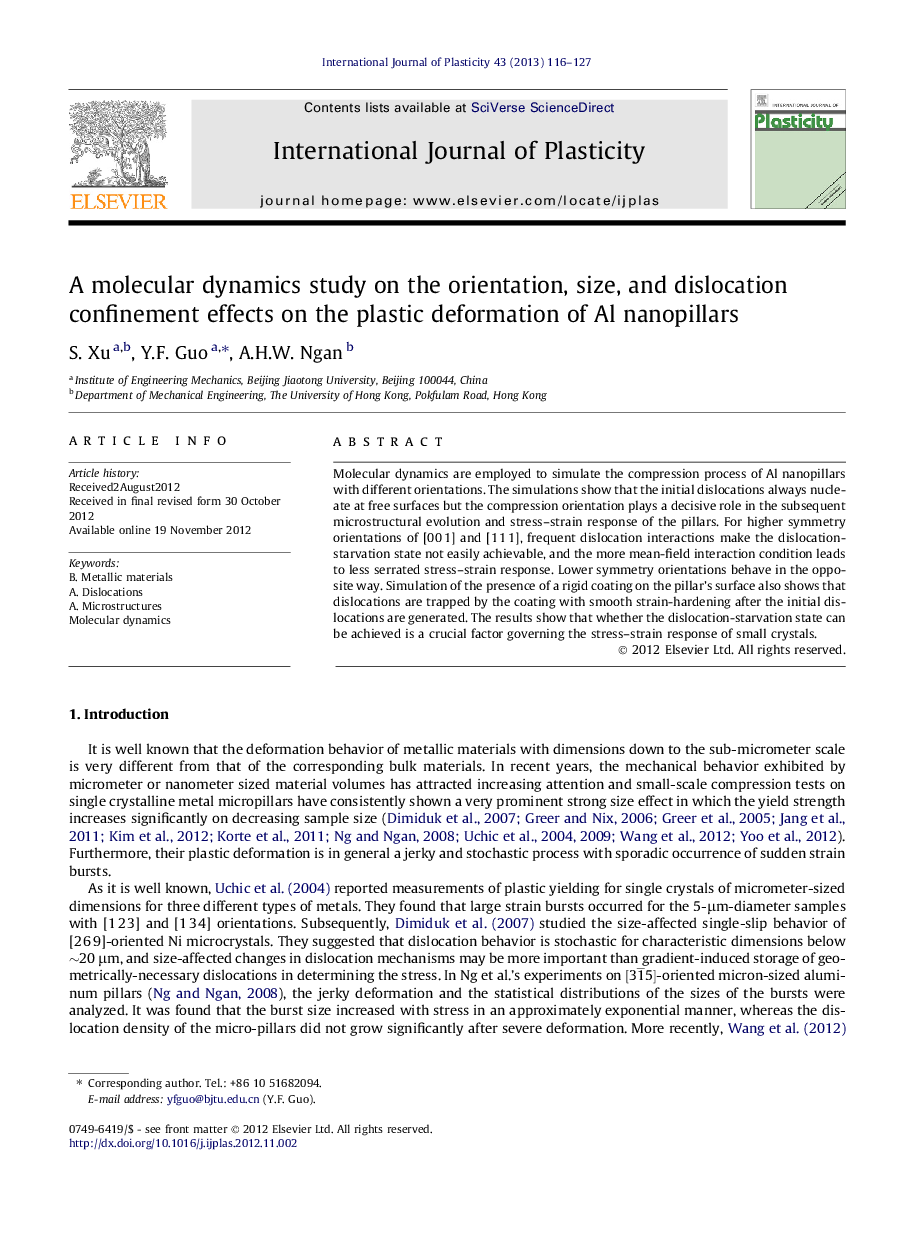| Article ID | Journal | Published Year | Pages | File Type |
|---|---|---|---|---|
| 786926 | International Journal of Plasticity | 2013 | 12 Pages |
Molecular dynamics are employed to simulate the compression process of Al nanopillars with different orientations. The simulations show that the initial dislocations always nucleate at free surfaces but the compression orientation plays a decisive role in the subsequent microstructural evolution and stress–strain response of the pillars. For higher symmetry orientations of [0 0 1] and [1 1 1], frequent dislocation interactions make the dislocation-starvation state not easily achievable, and the more mean-field interaction condition leads to less serrated stress–strain response. Lower symmetry orientations behave in the opposite way. Simulation of the presence of a rigid coating on the pillar’s surface also shows that dislocations are trapped by the coating with smooth strain-hardening after the initial dislocations are generated. The results show that whether the dislocation-starvation state can be achieved is a crucial factor governing the stress–strain response of small crystals.
► The orientation effect on the plastic deformation of nanopillars is investigated. ► The size effect on the plastic deformation of nanopillars is investigated. ► We reveal dislocation confinement effect on the deformation of nanopillars by MD. ► The serrated plastic deformation is well explained by a dislocation-starved state.
